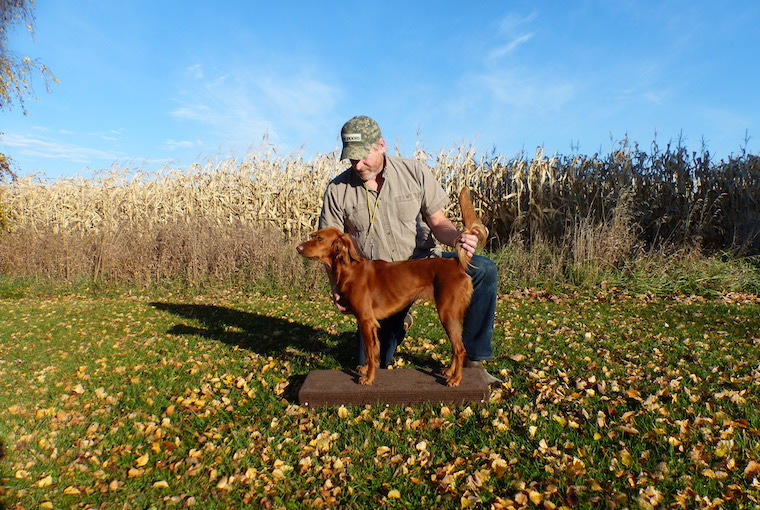
Being a gun dog guy for most of my life, I seldom find things more enjoyable than experiencing the partnership of hunting with a well-trained bird dog in the field.
There’s immense satisfaction in handling a lab with whistle commands and hand signals on a blind retrieve as I guide it to a duck. Or to be in the uplands gingerly stepping around a setter intensely locked on point to a woodcock or grouse. These are the moments I live for when the leaves start to change colour. Thankfully, things don’t stop for me at the end of the season, as there is always more dog training to complete. This year is no different, as we welcomed a new red setter puppy into our home.
Aside from a proper kennel (dog crate), an invaluable item I use for training the new pup is a place board.
Applications
A place board supports the relationship between dog and trainer, acting as the dog’s home base. Since the kennel is a site of familiarity and security for a puppy, a place board becomes a location for supportive conditioning. It provides a training space with a distinct boundary. Visually and physically, it’s easily defined by both dog and handler and becomes a theatre for introducing a puppy to formal obedience training. With its desire to please, a pup soon learns to love the place board and will respond to it very enthusiastically. As a trainer, it puts you in control of every aspect of the training process and can ensure a good experience and timely corrections. It’s the physical confines of the place board which allow for this to occur. The board becomes the spot where the pup can give you its full attention. When on the board, they recognize it as a time to work, and as any teacher will tell you, getting a student interested is the most critical part of the lesson.
Steadiness training
Steadiness is fundamental in obedience training for all working dogs, whether a retriever or a pointing breed. This is where the place board shines. Hunting dogs are bred for their natural game-finding abilities. For a retriever, it’s to see and fetch shot birds. For a pointer, it’s to find and point live birds. A retriever doesn’t need to learn how to retrieve, it needs to know how to be steady and calm in a duck blind and retrieve shot birds under control. A pointer doesn’t need to learn how to point, it needs to know how to hold point (whoa) and be steady to flush. A place board helps train these essential qualities.
Retrievers and pointers
Initially, I used a place board to teach retrievers to sit and stay. For a pointer, it’s to teach stand and stay. Training with a place board can begin at the most elementary level when the pup first comes home. Leash work can be introduced at the same time. As the puppy develops and becomes proficient with basic commands, other commands can be added to obtain the same desired response.
For example, a dog that has been taught to sit with the verbal command of “sit” can also learn to sit with a toot of a whistle or with a hand signal. For a retriever, this is the beginning stage of learning blind retrieves.
In training a pointer, the place board helps with overlaying the command of whoa once the dog has learned to stand quietly with all four feet on the surface. It gives the dog a substantial physical barrier for putting on the brakes quickly as soon as it steps in place from a walk or run. Performing the same exercise on the grass, there is no clear spot for the dog to stop, making it easy for the dog to be sloppy by taking an extra step or two. That creates a grey area for a dog and can easily lead to creeping while on a point.
Extending place board training
A place board can also introduce dogs to live birds, such as training pigeons. Once again, this will reinforce steadiness for flushing birds. In a short time, the dog can even start to associate a wild flush with the initial commands of sit or whoa. This is how you train a dog to be steady to flush. I also use a place board when I introduce a dog to gunfire. Because the board has become a place of familiarity and comfort, gunfire will be easier for the dog to get used to. Once again, the gunshot sound can become an overlaid command for sit. I also start retrieving drills from the place board. It works well for training a dog to deliver a bird to hand in the desired fashion. For example, the board can be placed in the heel position or in front of the handler to receive a bird. The place board being so easily transported, can also be placed in a duck blind. Place boards are very versatile and can be used with many different training styles. They are also perfect for e-collar conditioning.
Place boards are a valuable training tool for hunting dogs. They are the cornerstone for teaching good fundamentals and can be utilized throughout the training process. A place board promotes consistent handling and also to have control over making timely corrections, so the dog understands what it is that the trainer desires. It helps create a strong bond and trust with a dog, helping forge partnerships that will last a lifetime.
Originally published in the Jan.-Feb. 2023 issue of Ontario OUT of DOORS magazine


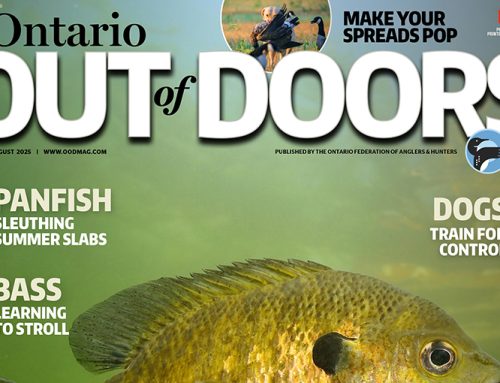
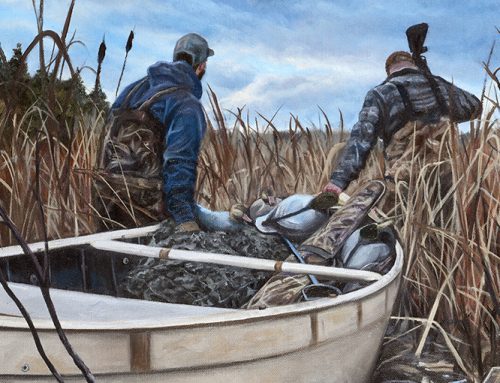
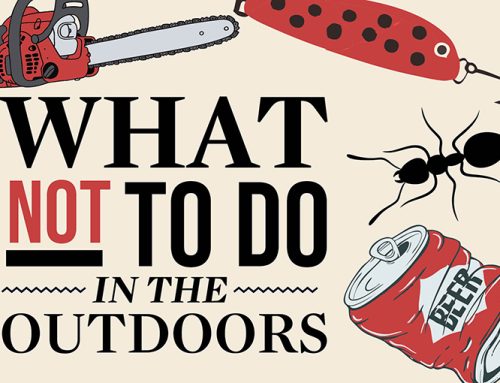
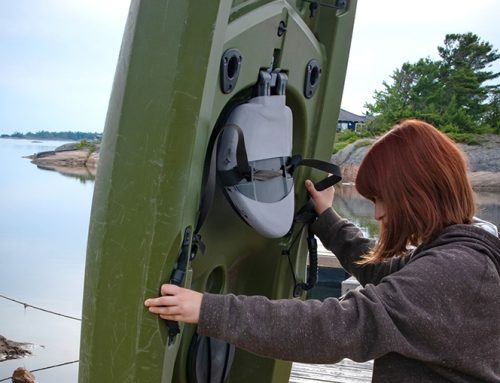
Leave A Comment